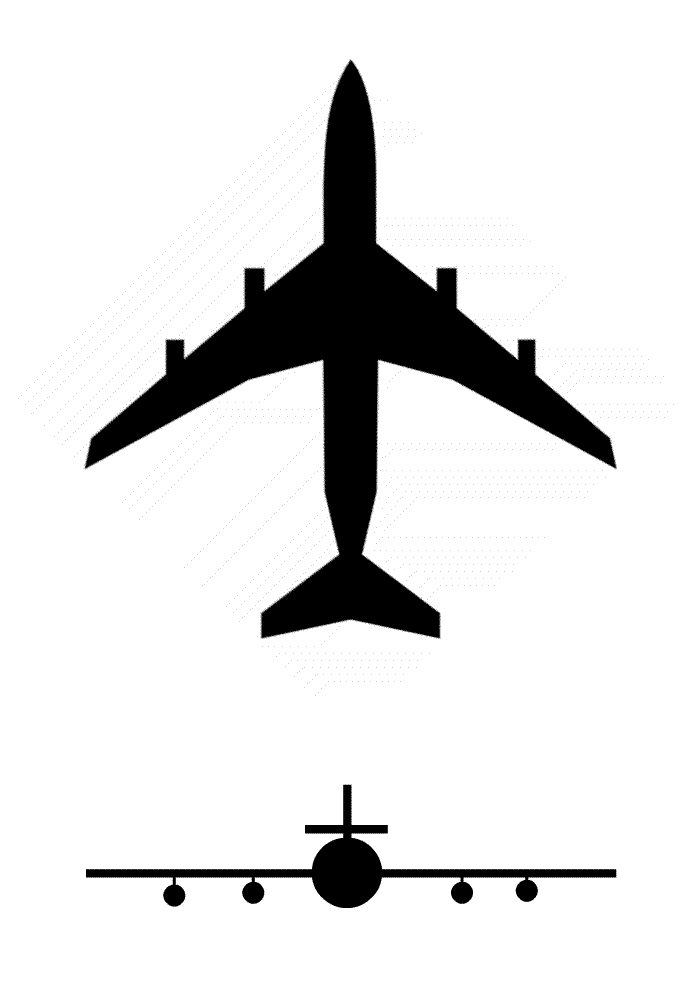|
Learjet 55
The Learjet 55 "Longhorn" is an American business jet manufactured by Learjet. Development and design The Learjet 50 series was first announced at the 1977 Paris air show with larger cabins than the existing Learjets. The series was to have three variants, the Learjet 54, 55 and 56 but only the Learjet 55 was built. The Learjet 55 was a low-wing cantilever monoplane with NASA developed winglets, the winglets gave rise to the nickname ''Longhorn''. The aircraft has a T-tail and is powered by two Garrett TFE731 turbofans mounted each side of the rear fuselage. It has a retractable tricycle landing gear and an enclosed cabin for up to ten passengers and a cockpit for the two crew. Construction of the Learjet 55 began in April 1978 after extensive testing and work on the wing design which came, initially, from the Learjet 25. The Learjet 55 first flew on 19 April 1979. The first production aircraft were produced starting 18 March 1981. 147 Learjet 55 aircraft were delivered. By 2018, ... [...More Info...] [...Related Items...] OR: [Wikipedia] [Google] [Baidu] |
Business Jet
A business jet, private jet, or bizjet is a jet aircraft designed for transporting small groups of people. Business jets may be adapted for other roles, such as the evacuation of casualties or express parcel deliveries, and some are used by public bodies, government officials or the armed forces. History Early developments The first small jet-powered civil aircraft was the Morane-Saulnier MS.760 Paris, developed privately in the early 1950s from the Morane-Saulnier MS.755 Fleuret, MS.755 Fleuret two-seat jet trainer. First flown in 1954, the MS.760 Paris differs from subsequent business jets in having only four seats arranged in two rows without a center aisle, similar to a light aircraft, under a large sliding canopy (aircraft), canopy similar to that of a fighter aircraft, fighter. A U.S. type certificate was awarded in July 1958, but commercial sales were limited, with most examples going to the military; an improved civil version similar to a modern very light jet, with a ... [...More Info...] [...Related Items...] OR: [Wikipedia] [Google] [Baidu] |
Paris Air Show
The Paris Air Show (french: Salon international de l'aéronautique et de l'espace de Paris-Le Bourget, Salon du Bourget) is a trade fair and air show held in odd years at Paris–Le Bourget Airport in north Paris, France. Organized by the French aerospace industry's primary representative body, the ''Groupement des industries françaises aéronautiques et spatiales'' (GIFAS), it is the largest air show and aerospace-industry exhibition event in the world, measured by number of exhibitors and size of exhibit space, followed by UK's Farnborough Air Show, Dubai Air Show, and Singapore Airshow. First held in 1909, the Paris Air Show was held every odd year from 1949 to 2019, when the 53rd Air Show attracted 2,453 exhibitors from 49 countries and occupied more than 125,000 square meters. Organizers canceled the 2021 show due to the COVID pandemic and said it would resume in 2023. It is a large trade fair, demonstrating military and civilian aircraft, and is attended by many military ... [...More Info...] [...Related Items...] OR: [Wikipedia] [Google] [Baidu] |
NASA
The National Aeronautics and Space Administration (NASA ) is an independent agency of the US federal government responsible for the civil space program, aeronautics research, and space research. NASA was established in 1958, succeeding the National Advisory Committee for Aeronautics (NACA), to give the U.S. space development effort a distinctly civilian orientation, emphasizing peaceful applications in space science. NASA has since led most American space exploration, including Project Mercury, Project Gemini, the 1968-1972 Apollo Moon landing missions, the Skylab space station, and the Space Shuttle. NASA supports the International Space Station and oversees the development of the Orion spacecraft and the Space Launch System for the crewed lunar Artemis program, Commercial Crew spacecraft, and the planned Lunar Gateway space station. The agency is also responsible for the Launch Services Program, which provides oversight of launch operations and countdown management f ... [...More Info...] [...Related Items...] OR: [Wikipedia] [Google] [Baidu] |
Winglets
Wingtip devices are intended to improve the efficiency of fixed-wing aircraft by reducing drag. Although there are several types of wing tip devices which function in different manners, their intended effect is always to reduce an aircraft's drag by partial recovery of the tip vortex energy. Wingtip devices can also improve aircraft handling characteristics and enhance safety for following aircraft. Such devices increase the effective aspect ratio of a wing without greatly increasing the wingspan. Extending the span would lower lift-induced drag, but would increase parasitic drag and would require boosting the strength and weight of the wing. At some point, there is no net benefit from further increased span. There may also be operational considerations that limit the allowable wingspan (e.g., available width at airport gates). Wingtip devices help prevent the flow around the wingtip of higher pressure air under the wing flowing to the lower pressure surface on top at the ... [...More Info...] [...Related Items...] OR: [Wikipedia] [Google] [Baidu] |
Garrett TFE731
The Garrett TFE731 (now Honeywell TFE731) is a family of geared turbofan engines commonly used on business jet aircraft. Garrett AiResearch originally designed and built the engine, which due to mergers was later produced by AlliedSignal and now Honeywell Aerospace. Since the engine was introduced in 1972, over 11,000 engines have been built, flying over 100 million flight-hours. Development The TFE731 was based on the core of the TSCP700, which was specifically developed for use as the auxiliary power unit (APU) on the McDonnell Douglas DC-10. The design featured two important factors: low fuel consumption, and low noise profiles that met the newly established U.S. noise abatement regulations. The first test run of the TFE731 occurred in 1970 at Garrett's plant in Torrance, California. The first production model, the TFE731-2, began rolling off the assembly line in August, 1972, and was used on the Learjet 35/36 and Dassault Falcon 10, both of which entered production in 1 ... [...More Info...] [...Related Items...] OR: [Wikipedia] [Google] [Baidu] |
Strake (aeronautics)
In aviation, a strake is an aerodynamic surface generally mounted on the fuselage of an aircraft to improve the flight characteristics either by controlling the airflow (acting as large vortex generators) or by a simple stabilising effect. In general a strake is longer than it is wide, in contrast to a winglet or a moustache. Leading edge root extensions (LERX) are also sometimes referred to as wing strakes. Nose strakes On both supersonic and subsonic types, smaller strakes are sometimes applied to the forward fuselage to control the fuselage flow at high angles of attack; for example, the Concorde SST had small nose strakes "to get a better directional stability". Wing strakes Double delta wing aircraft (Concorde, Tupolev Tu-144, Boeing 2707 SST project) featured a forward extended leading edge that may be considered as a wing strake; it provides the same additional vortex lift at high angle of attack by leading edge suction. Nacelle strakes On jet aircraft where the en ... [...More Info...] [...Related Items...] OR: [Wikipedia] [Google] [Baidu] |
Dutch Roll
Dutch roll is a type of aircraft motion consisting of an out-of-phase combination of "tail-wagging" (yaw) and rocking from side to side (roll). This yaw-roll coupling is one of the basic flight dynamic modes (others include phugoid, short period, and spiral divergence). This motion is normally well damped in most light aircraft, though some aircraft with well-damped Dutch roll modes can experience a degradation in damping as airspeed decreases and altitude increases. Dutch roll stability can be artificially increased by the installation of a yaw damper. Wings placed well above the center of gravity, sweepback (swept wings) and dihedral wings tend to increase the roll restoring force, and therefore increase the Dutch roll tendencies; this is why high-winged aircraft often are slightly anhedral, and transport-category swept-wing aircraft are equipped with yaw dampers. A similar phenomenon can happen in a trailer pulled by a car. Stability In aircraft design, Dutch roll results ... [...More Info...] [...Related Items...] OR: [Wikipedia] [Google] [Baidu] |
Tail Cone
The tail is the section at the rear end of certain kinds of animal Animals are multicellular, eukaryotic organisms in the Kingdom (biology), biological kingdom Animalia. With few exceptions, animals Heterotroph, consume organic material, Cellular respiration#Aerobic respiration, breathe oxygen, are Motilit ...s’ bodies; in general, the term refers to a distinct, flexible appendage to the torso. It is the part of the body that corresponds roughly to the sacrum and coccyx in mammals, reptiles, and birds. While tails are primarily a feature of vertebrates, some invertebrates including scorpions and springtails, as well as snails and slugs, have tail-like appendages that are sometimes referred to as tails. Tailed objects are sometimes referred to as "caudate" and the part of the body associated with or proximal to the tail are given the adjective "caudal". Function Animal tails are used in a variety of ways. They provide a source of Animal locomotion, locomotion for fis ... [...More Info...] [...Related Items...] OR: [Wikipedia] [Google] [Baidu] |
Servicios Aéreos Profesionales
Servicios Aéreos Profesionales, S.A. (also known as SAP Air or SAP Group) is an airline with its corporate headquarters on the property of La Isabela International Airport in Santo Domingo, Dominican Republic. It operates services in the Caribbean area. History The airline was established in 1981 and is wholly owned by Miguel Patin Hernandez. Services Servicios Aéreos Profesionales operates the following services (as of June 2008): *Domestic charter flights: La Romana, Puerto Plata, Punta Cana, Samana, Santiago and Bridgetown. *International charter destinations: Fort Lauderdale, Cancún, Montego Bay, Pointe-à-Pitre, Porlamar, St Lucia, San Juan, Bridgetown and Varadero. *Business Aviation: (Aircraft types: Learjet 55, Learjet 35, Learjet 25 and Hawker 125-600) *Crew Transfer Flights *Connections Flights: Connections throughout the Dominican Republic and The Caribbean. *Air Ambulance: Professional Air Ambulance Services as well as medical assistance on board. Available ... [...More Info...] [...Related Items...] OR: [Wikipedia] [Google] [Baidu] |
Illustrated Encyclopedia Of Aircraft
The ''Illustrated Encyclopedia of Aircraft'' was a weekly partwork magazine by Aerospace Publishing (an imprint of Orbis Publishing) which was published in the United Kingdom (and sold in other countries too) during the early 1980s. The magazine was intended to eventually make up a multi-volume encyclopedia dedicated to aviation. First issued in 1981, the partwork comprised 216 issues, each of twenty pages (plus the covers), making up eighteen volumes (4280 pages). The first two issues were sold together for the price of one, subsequent issues were sold on their own. Empty binders for each volume (of twelve issues) were also sold. These binders were dark blue in colour and contained the imprint of a Panavia Tornado on the front. They held the issues using a metal strip that was threaded through the staples of each issue to hold them in place. Each issue consisted of four separate sections. The final two parts (215 and 216), issued in 1985, comprised the index for the encyclopedi ... [...More Info...] [...Related Items...] OR: [Wikipedia] [Google] [Baidu] |





.jpg)